"I lost control of the plane, I don't know how I managed to get out alive!"
The ultimate solo trip
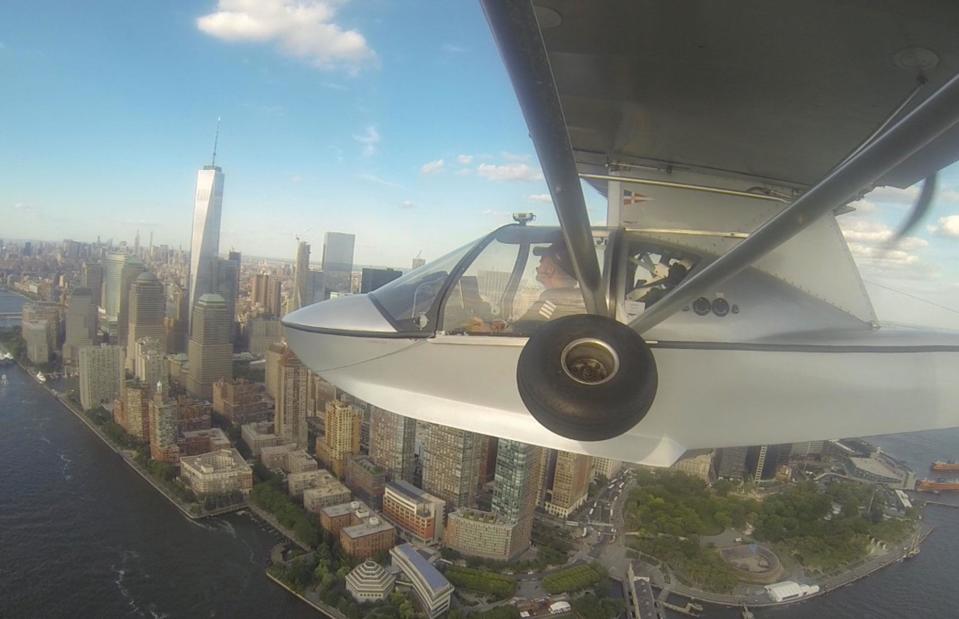
Courtesy of Michael Smith
When adventurer Michael Smith climbed into his tiny plane on the morning of 12 April 2015 he had one big ambition – to fly 10,500 miles (16,900km) from Melbourne, Australia to Southampton, England in eight weeks. But after completing that initial journey, Michael decided to just keep on going, setting a record as the first person to circumnavigate the world in a flying boat.
Read on to discover how Michael faced down everything from life-threatening weather to giant rats, and see the mind-blowing images he took along the way...
How it all started
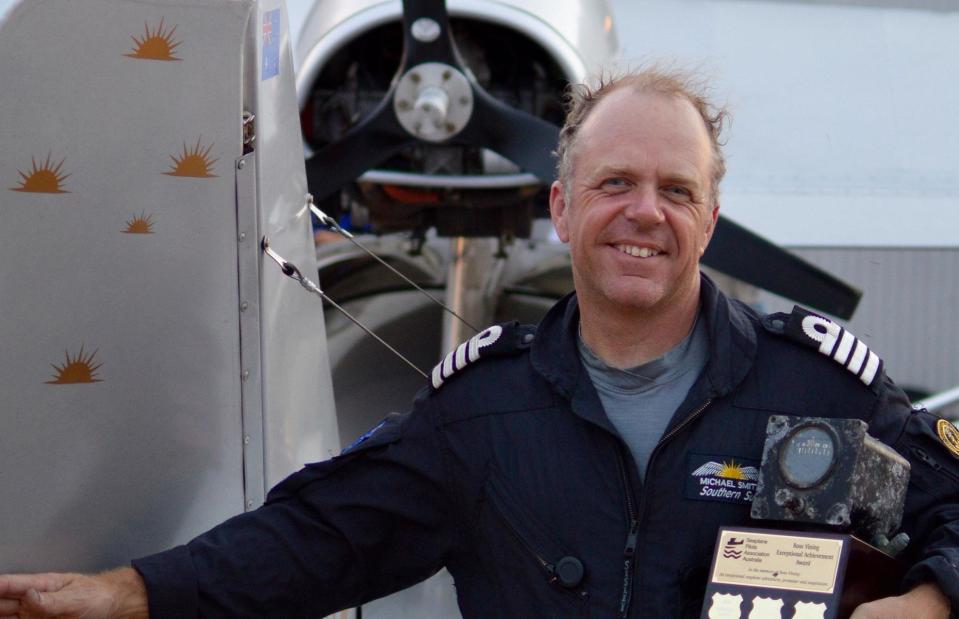
Courtesy of Michael Smith
Based in Melbourne, Australia, Michael is a registered pilot with dual British and Australian citizenship, but flying has never been his day job. He completed his pilot’s training later in life after a career spent designing cinema equipment, eventually building his business to own several cinemas. It was only when Michael’s sons took gap years before university that the idea of flying from Australia to England took hold. “There was definitely no lightbulb moment and the whole idea was just percolating away in the back of my mind,” Michael tells us. “I spent a few years thinking about it, a couple of years working towards it and a full year planning. There was more duration of time planning than there was doing the actual trip.”
Inspired by the past
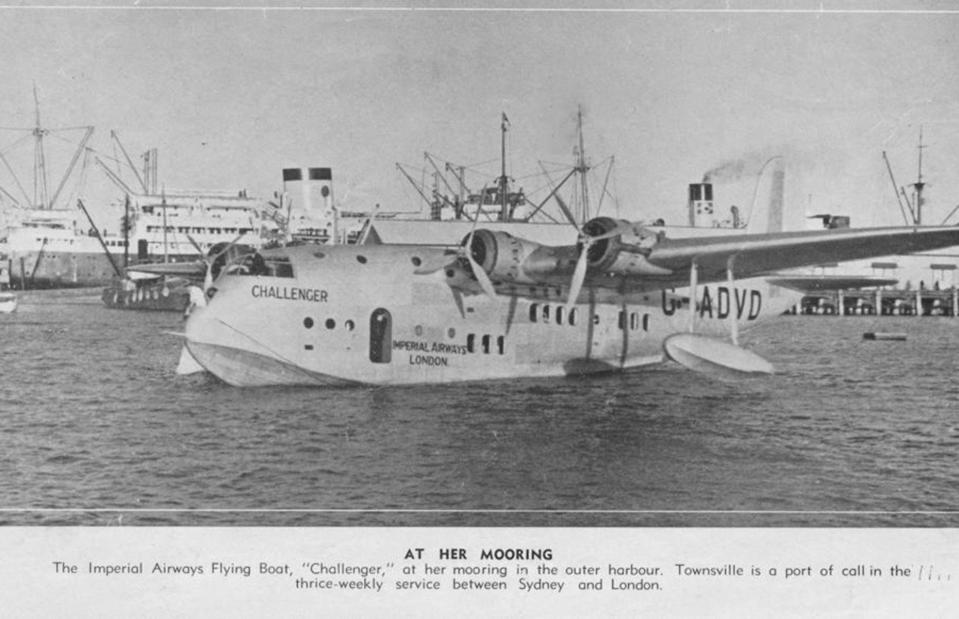
North Queensland register/Wikimedia Commons/Public domain
Michael’s adventure was influenced by the planes of the past, specifically by the glamour and romance of Imperial Airways’ flying boat service. Introduced in 1938, the route went from Sydney, Australia to Southampton, England and the journey involved nine overnight hotel stops, via the Middle East, onboard a four-engine Short Empire flying boat. “I always used to think it must have been amazing back in the 1930s," Michael says. "You’d pack your dinner suit because you had to dine properly every evening.”
Finding the right plane
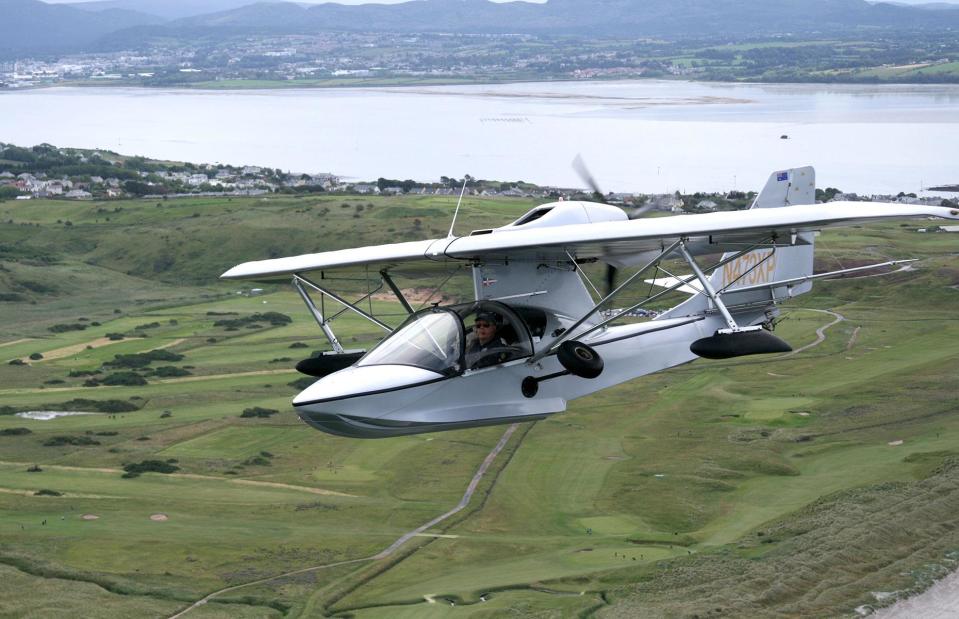
Courtesy of A Fenton
Recreating such an ambitious journey required the right aircraft. After searching for many models Michael settled on a specially-built amphibious flying boat that he named Southern Sun. The two-seater single-engine plane is a 'Searey'. Made in Florida, it's capable of landing on both runways and water.
An aircraft like no other
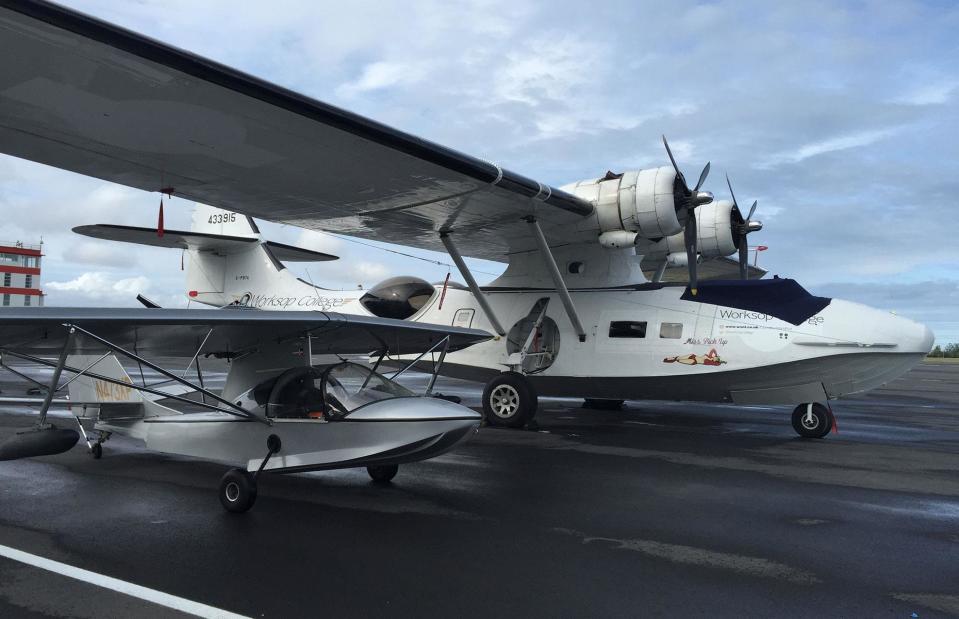
Courtesy of Michael Smith
Crucially for Michael, Southern Sun was a modern plane with the look and feel of the 1930s aircrafts that inspired his journey. Due to the long distances involved, Michael was able to make several adjustments to the plane’s design too. “I worked with the factory to put more fuel tanks in,” he explains. “The standard plane has a four-hour fuel tank and by the time I was finished there were 13 hours' worth of fuel tanks and that got me through to London. To cross the Atlantic and the Pacific I put an extra fuel tank in that gave me 21 hours of fuel.” The dinky size of the plane is never more evident than in this image of Southern Sun tucked under the wing of a Catalina plane in Iceland.
Planning the route
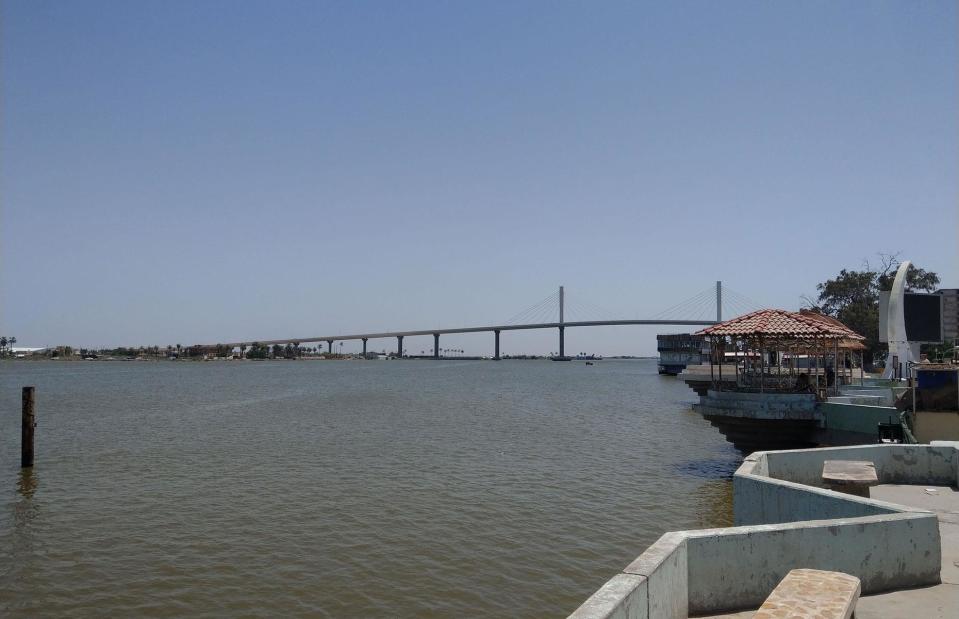
Mohammed_Al_Ali/Shutterstock
Michael couldn’t directly replicate the original flying boat route. For some original stops, such as Lake Basra in Iraq (pictured) it proved impossible to get modern-day permission to land. With most of his individual journeys crossing international borders, Michael had to arrange pit stops at major hubs to clear immigration and, most importantly, fill up with the right aviation fuel. “There were lots of permissions needed and it took months of paperwork done in advance,” says Michael.
The adventure begins
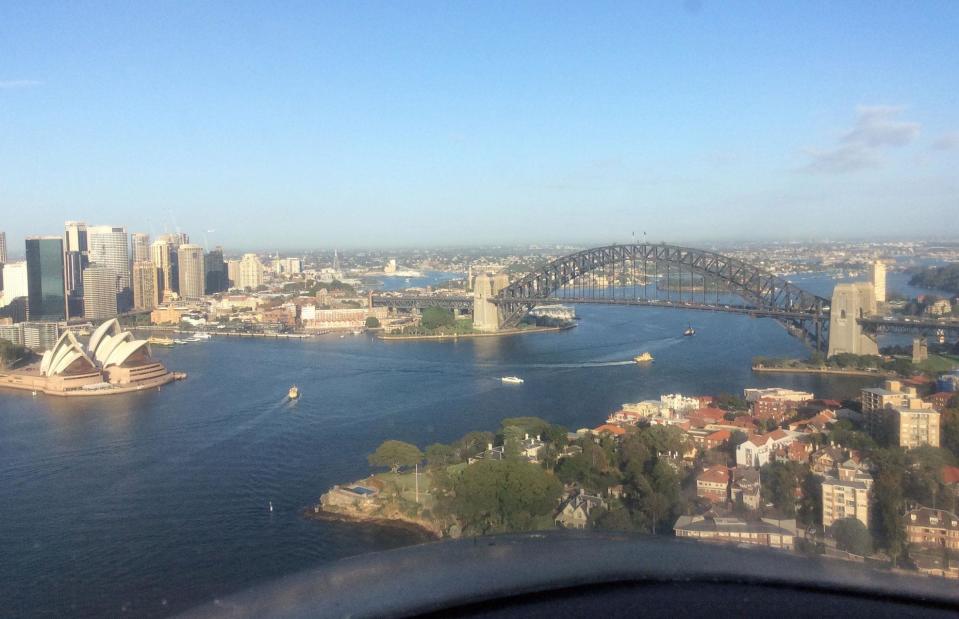
Courtesy of Michael Smith
To start his journey, Michael wanted to leave from Rose Bay in Sydney to mimic the flying boat route, but he had one important stop to make first – to say goodbye to his mum, around 90 minutes east of Melbourne. “I hadn’t told her what I was doing so I thought I’d tell her in person,” recalls Michael. “Then that night I landed at a place called Wollongong, just south of Sydney, and the next morning I left at sunrise to land in Sydney Harbour.”
Earth from above
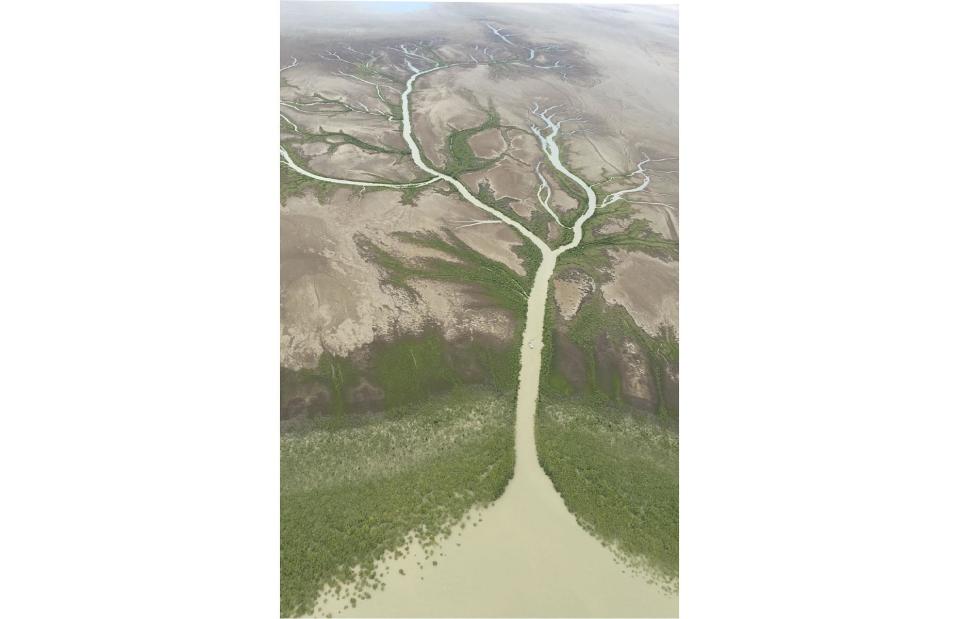
Courtesy of Michael Smith
While the flying boats of the 1930s took just 10 days, Michael was determined to spend time seeing new things and exploring towns and cities, so he spread his adventure over two months. But he didn't need to cross an international border to be enthralled by remarkable sights, photographing this beautiful tree pattern created by the confluence of several rivers in the Northern Territory of Australia.
First international stop
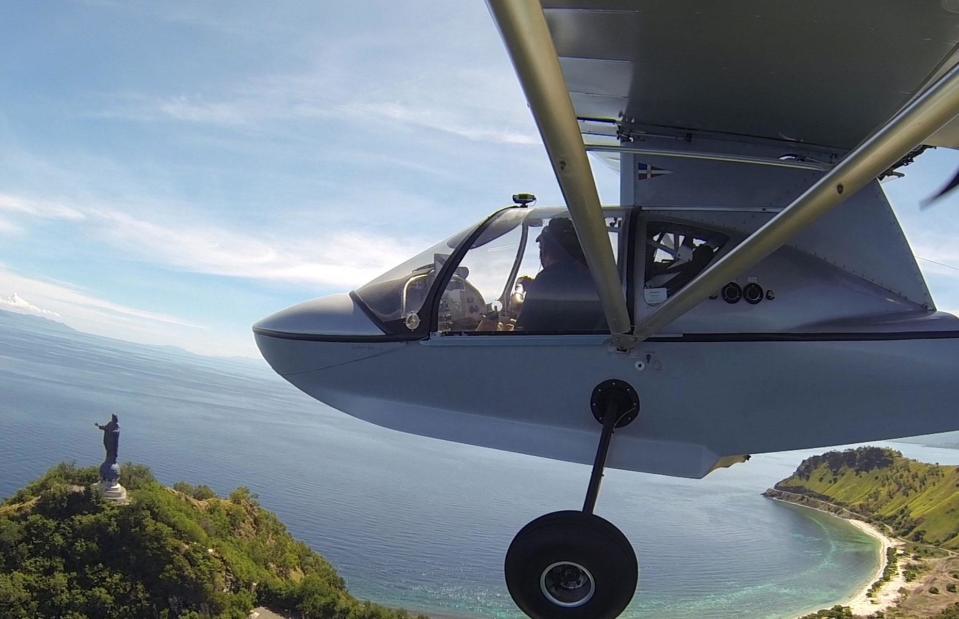
Courtesy of Michael Smith
The first stop outside of Australia was Timor-Leste, an island that holds a special significance for Michael. Not only because the capital Dili was a flying boat refuelling stop during the 1930s, but because Michael’s work meant he was sure of a warm welcome from colleagues and friends there. “We have a travelling cinema programme in East Timor that goes around showing free movies where people don’t have TV,” explains Michael. “The staff there thought my little plane was kind of hilarious!”
Tiny plane, huge airport
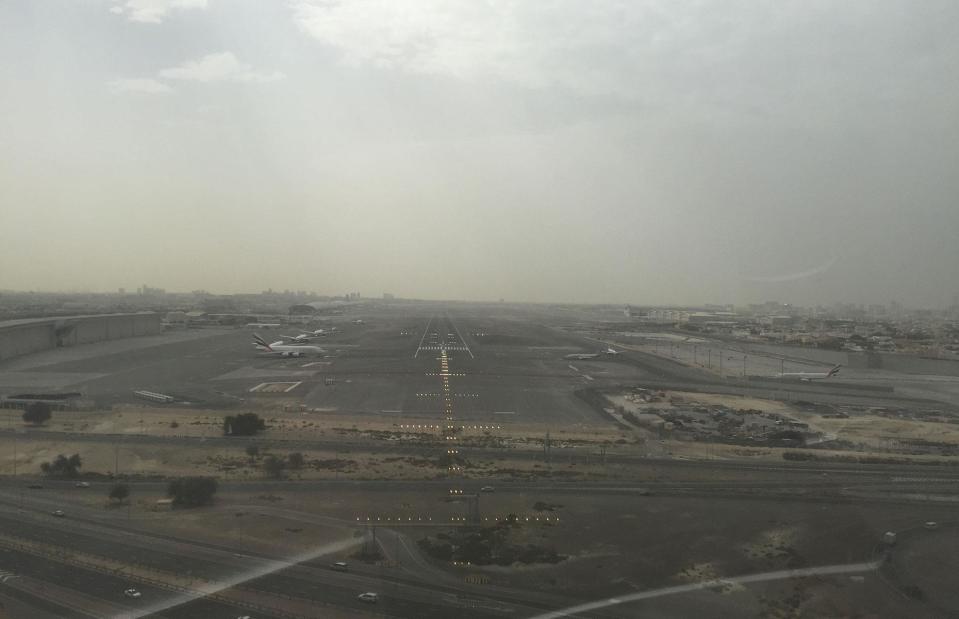
Courtesy of Michael Smith
Michael's journey continued through parts of Asia less familiar to him, with stops in Singapore, Bangkok and Karachi, before reaching the Middle East. Touching down at Dubai International Airport, one of the world’s busiest for international connections, was a highlight for him. “I was really landing with the big boys there,” recalls Michael. “You’re right by the A380s in a small plane and it’s pretty daunting.”
Landing on Italy's Lake Como
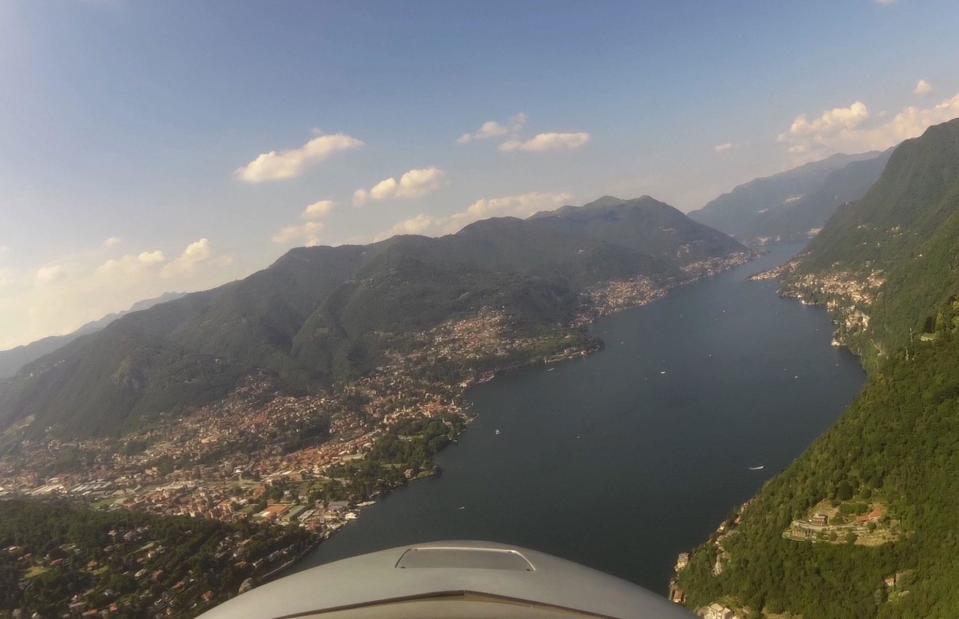
Courtesy of Michael Smith
While the world’s larger airport terminals were exciting, Michael also found opportunities to land on the water where possible. Some stops, like at Lake Como in northern Italy, offered a more intimate experience, with customs officers coming out to meet him as Southern Sun arrived on the spectacular lake.
The world from above
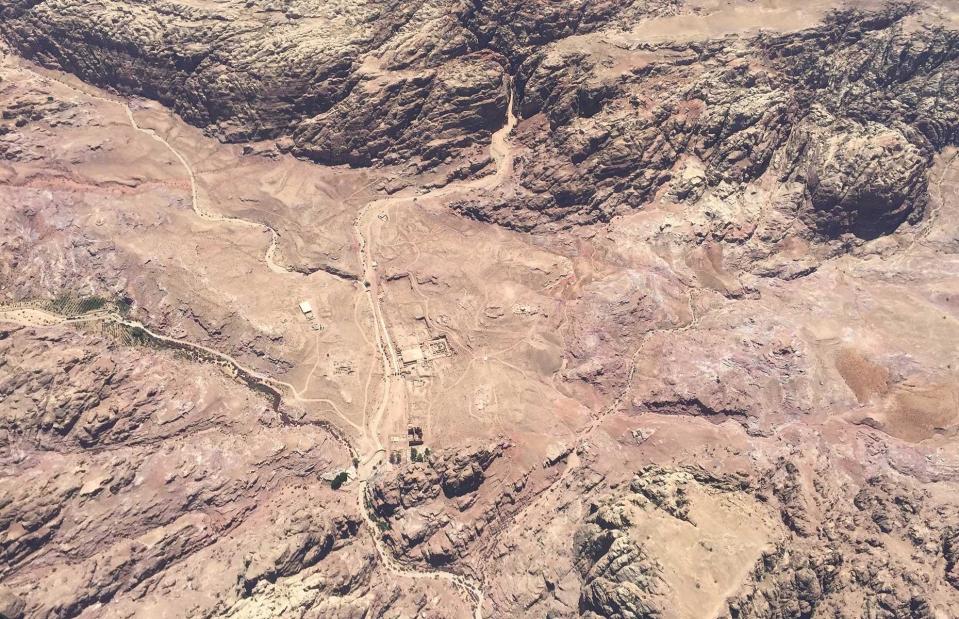
Courtesy of Michael Smith
Another aspect of the adventure Michael enjoyed was the new perspective seeing Earth from the sky can bring. While flying over Jordan he captured this amazing aerial image showing the footprint of the ancient ruined city of Petra.
London calling
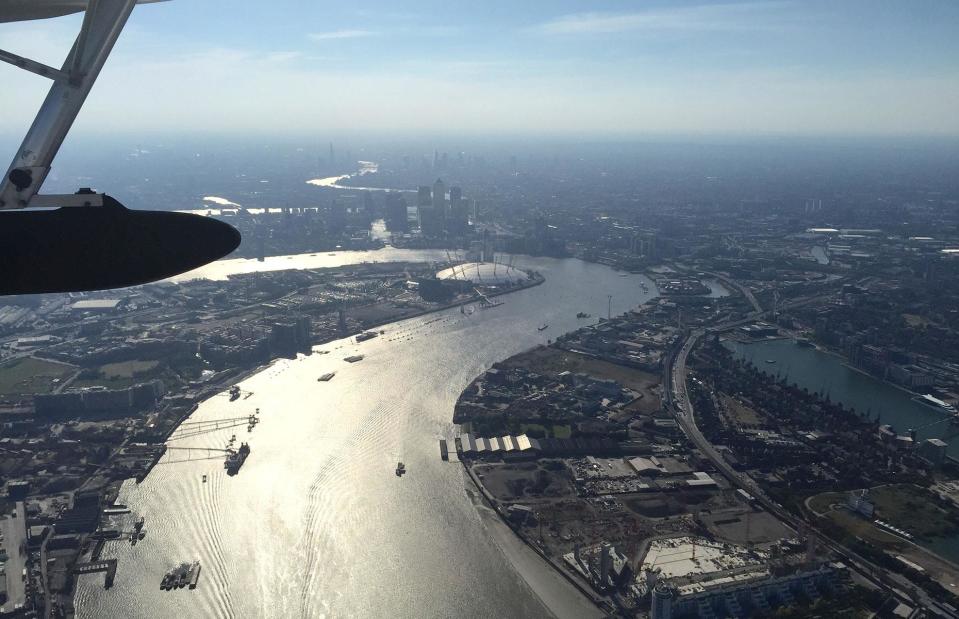
Courtesy of Michael Smith
Eight weeks and some 10,500 miles (16,900km) after leaving Melbourne, Michael landed in England. He’d been granted permission to do a short landing in Southampton Water – another nod to the flying boats – before touching town at Damyns Hall Aerodrome near Upminster, East London. Pictured is Southern Sun over the River Thames at Greenwich, looking west towards the city of London.
A huge decision
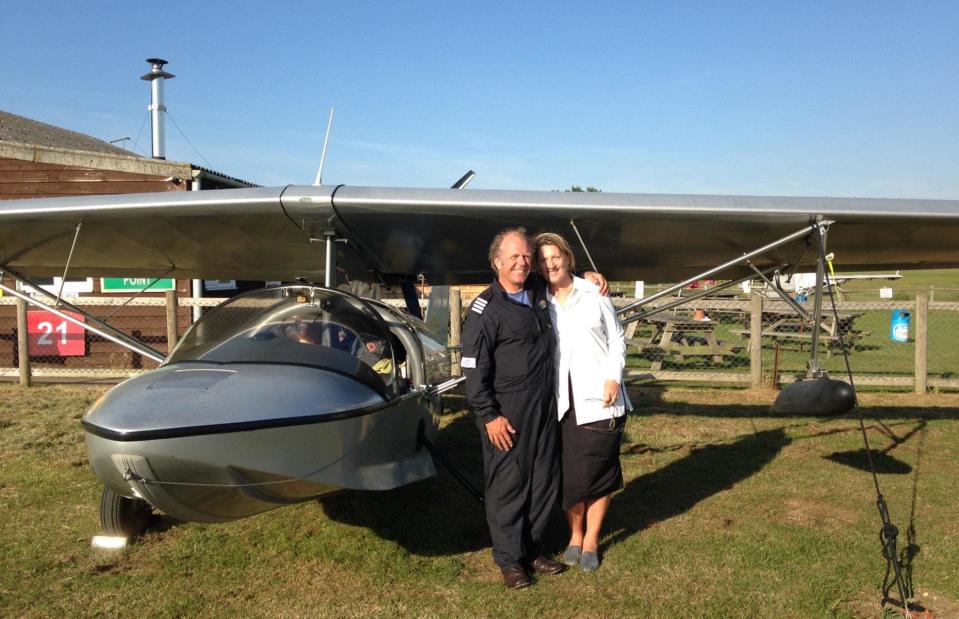
Courtesy of Michael Smith
In London, Michael was reunited with his wife, Anne, who flew to join him for a month’s holiday in England and Scotland. “The plan was to pack up the plane, take the wings off, put it in a shipping container and send it back to Australia,” says Michael. “But then my wife said to me: ‘You seem to be enjoying this, why don’t you just keep going?’.” That moment changed everything for Michael as he plotted a route home to Australia via America and the Pacific. However, the second part of the journey didn’t always go to plan…
Tackling the notorious North Atlantic
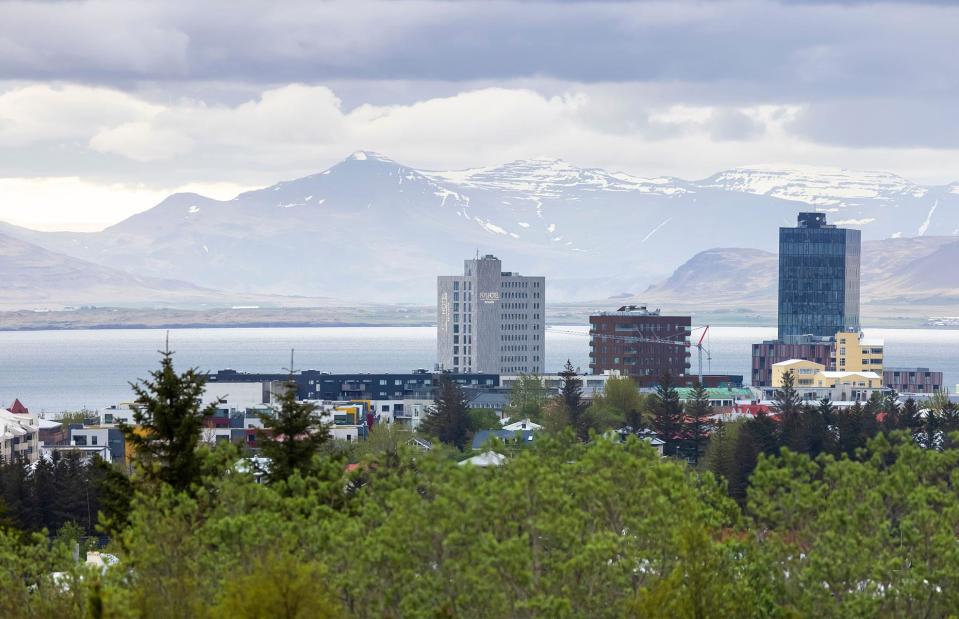
SNEHIT PHOTO/Shutterstock
“Flying from Melbourne to London was reasonably easy,” Michael says. “There was smog around Indonesia and Asia which made visibility difficult but never dangerous.” However, Michael faced a much greater challenge when crossing the North Atlantic Ocean, leaving from Stornoway in Scotland’s Western Isles and heading to Reykjavik, Iceland. “I arrived in Iceland to find the cloud almost on the ground after crossing the ocean for nine hours,” Michael explains. “You just don't have any choices, except to go under it and find your way to the airport, because it's not like you can turn around and go back.”
Unspoiled landscapes
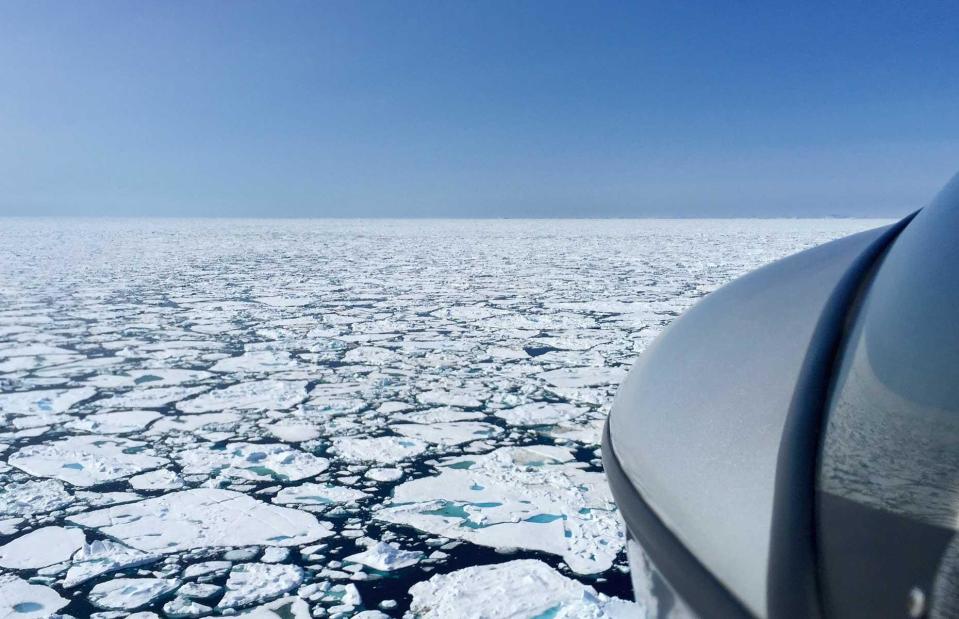
Courtesy of Michael Smith
From Iceland Michael flew to Kulusuk in Greenland, a section of the journey that provided some of the most staggering views of the whole trip – the ice floes on the country’s east coast. “I now recommend Greenland to anyone who can take the trouble to get there, because it is so unique,” says Michael.
Near-death experience
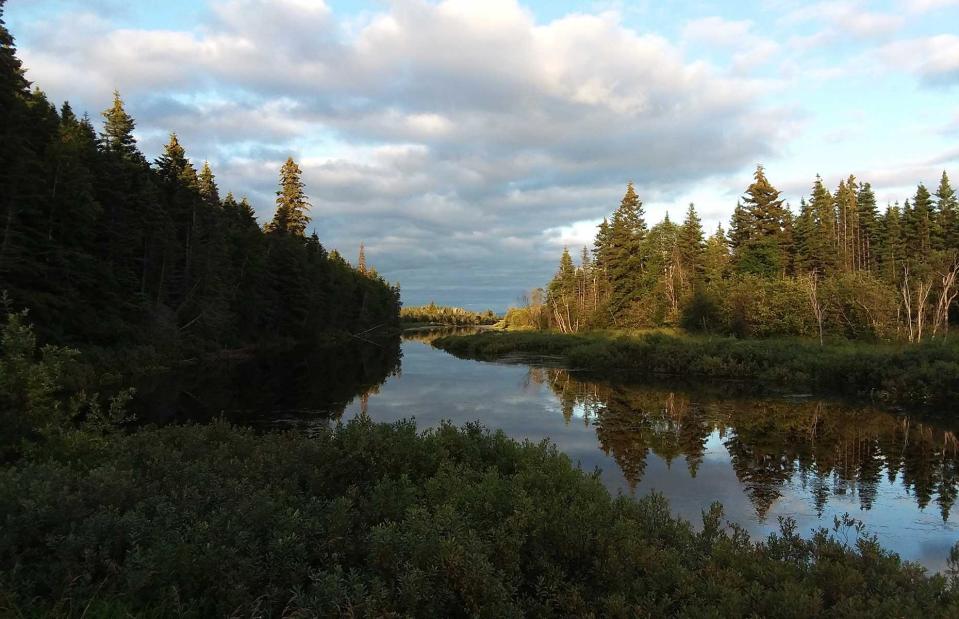
deployq/Shutterstock
Greenland proved to be the calm before the storm. En route from the capital of Nuuk to Canada, Michael had what he describes as an “awful incident”. “There were clouds below me and clouds above me that came together and I ended up getting lost,” he recalls. “I lost control of the plane and I was very, very lucky to walk away from that and I don’t know really how I managed to get out of it.” Fortunately, Michael landed in Goose Bay, Newfoundland, Canada, unharmed.
Lessons learned
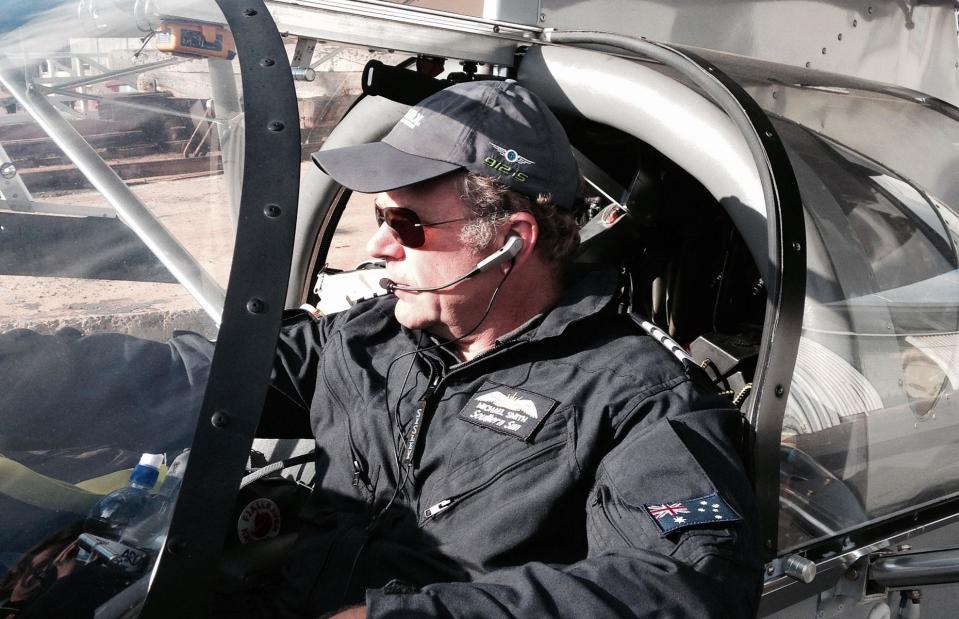
Courtesy of Michael Smith
Although shaken by the journey to Canada, it wasn’t long before Michael was back in the air. "I got up the next morning and I didn't want to fly straight away,” he says. “So I went down to the plane and I just did some maintenance and I changed the oil. And I did things that didn't need to be done. And then I decided, if I don't get in the plane and go for a fly this afternoon, I might never get in it again. You just tell yourself, look, other people have had hair-raising moments, you got out of it, you've got to learn from it and be more careful.”
A unique New York landing
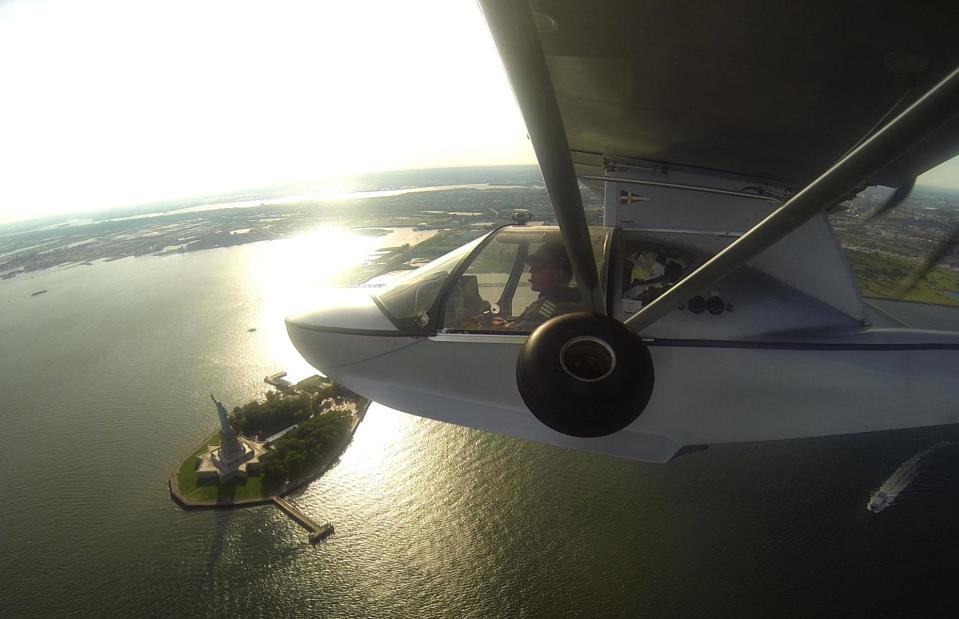
Courtesy of Michael Smith
After stopping in Botwood, Newfoundland, to visit the Botwood Flying Boat Museum, Michael’s next stop was Bangor, Maine, USA to clear American customs before heading on to New York. There was no need to wrestle with JFK airport when he got to the Big Apple, as Michael landed Southern Sun straight on the Hudson River – only after he’d flown past the Statue of Liberty, Manhattan and the aircraft carrier Intrepid, of course.
Sleeping on the Mississippi
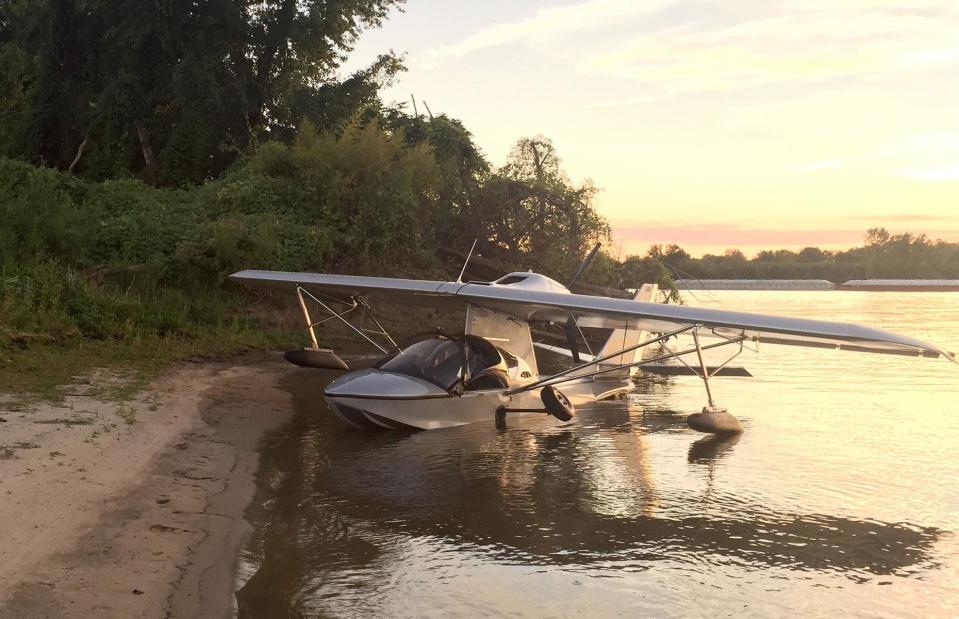
Courtesy of Michael Smith
For much of the journey, Southern Sun’s movements were controlled by air traffic control with Michael having set dates and destinations for clearance. But while in America itself, Michael wasn’t required to follow a set plan until he reached Seattle. “I followed the flow of the Mississippi River going to the source and landing on the river at night,” he says. “Twice I slept in the plane. I'd lie on the seat, effectively upside down, so that I was feet-up over the back of the seat on the parcel shelf, and my head was under the dash. It kind of worked, but it wasn't really very comfortable.”
On to Alaska
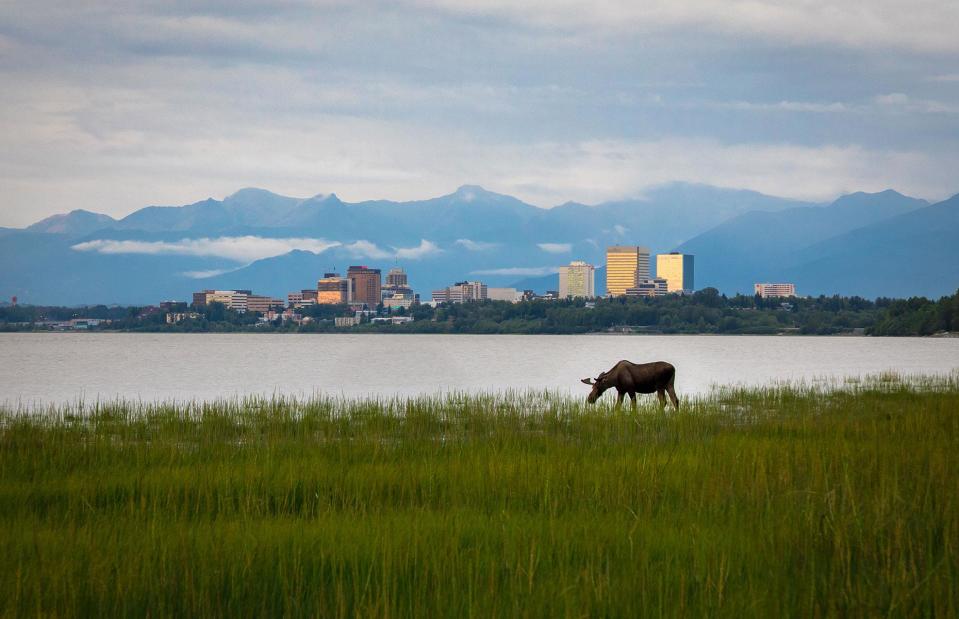
BILD LLC/Shutterstock
By late September Michael’s American adventure was coming to a close. He was conscious that he didn’t want to be in the skies over Alaska during winter. To speed up the itinerary he did a 12-hour non-stop flight from Minnesota to Washington State, then a short hop to Seattle to reach the West Coast, before heading to Anchorage. “Everyone was telling me that "it wasn't safe to fly in Alaska after September," recalls Michael. “And that was at the forefront of my mind at that point.”
End of the Earth
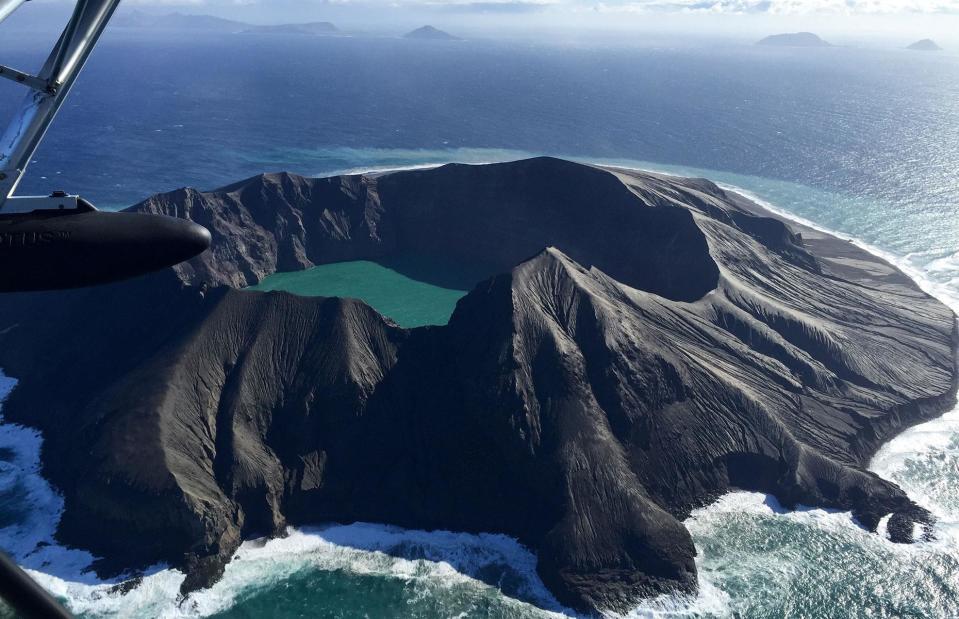
Courtesy of Michael Smith
However, the Alaskan mainland wasn’t Michael’s ultimate goal. His sense of urgency was also prompted by a desire to fly over the Aleutian Islands, a chain of 14 volcanic isles and 55 smaller specks west of Alaska, isolated in the Bering Sea and one of the remotest places on the planet. It was both a stroke of luck and deeply frustrating for Michael that due to a turn in the weather, he got stuck for three weeks on Adak, one of the Aleutian Islands, around 1,190 miles (1,920km) southwest of Anchorage.
Abandoned places
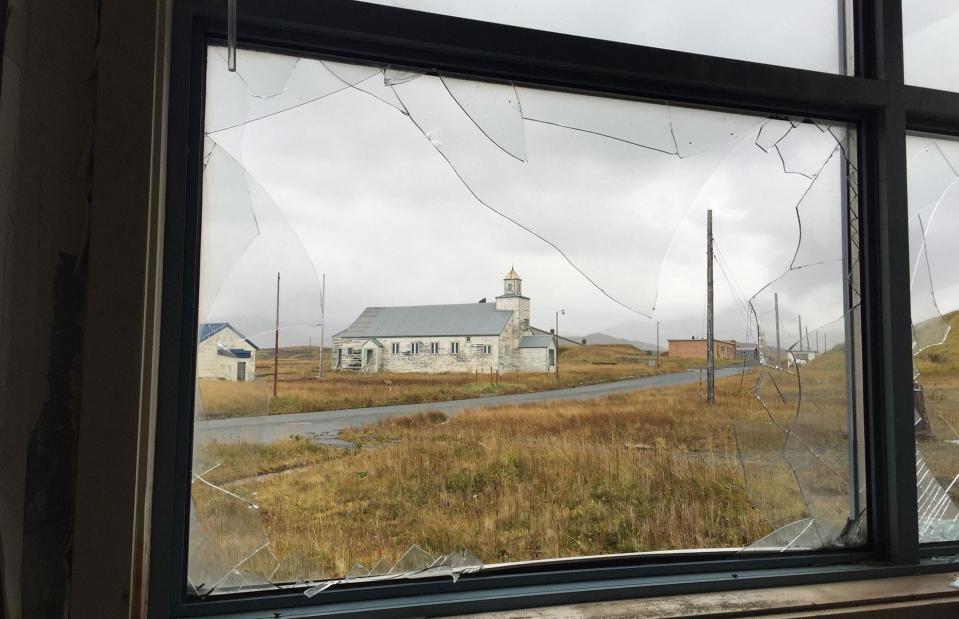
Courtesy of Michael Smith
The Aleutian Islands are largely abandoned but their remote location saved Michael’s trip. Concerned about how the tiny Southern Sun would get from Alaska to Japan without permission to land on Russian territory, and without running out of fuel, Michael came up with an ingenious solution: he'd break the journey at Attu, which is also part of the Aleutians and the westernmost point in the USA, nearly 500 miles (800km) from Adak (pictured). From there he’d continue to Japan. The catch? Attu’s only inhabitants are giant rats…
Going to extremes
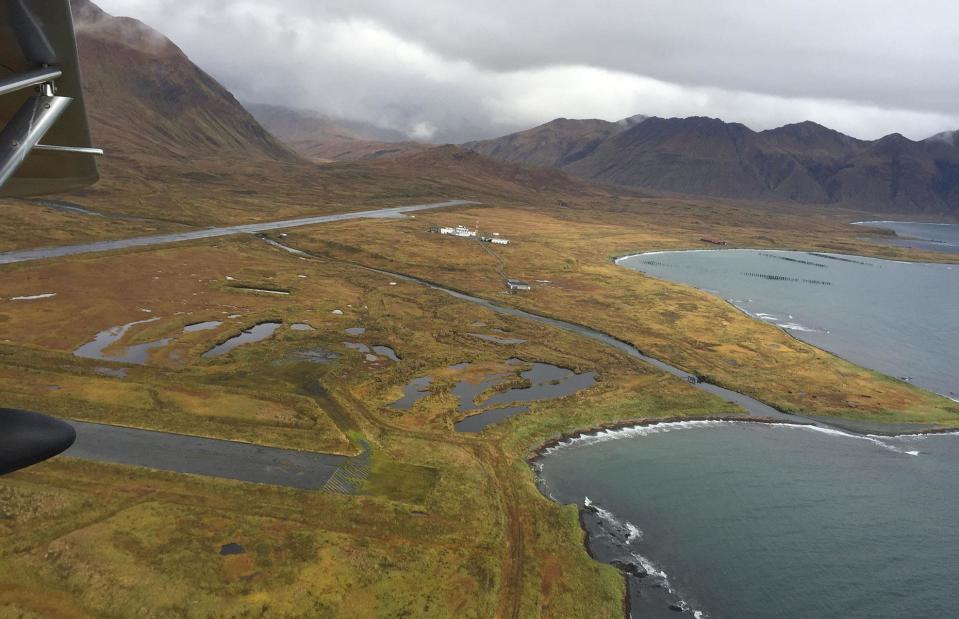
Courtesy of Michael Smith
The prospect of humongous rodents didn’t deter Michael. Consulting Google maps and finding there was a runway intact on the island, he calculated how he’d get to Japan. “I decided I could ferry six hours of fuel from Adak to Attu in fuel cans, leave it by the runway, fly back to Adak, wait for the next weather window, then make one really big passage.” The plan worked, although the journey meant a gruelling 23 hours of flying in one day from Alaska to Japan.
Heading home
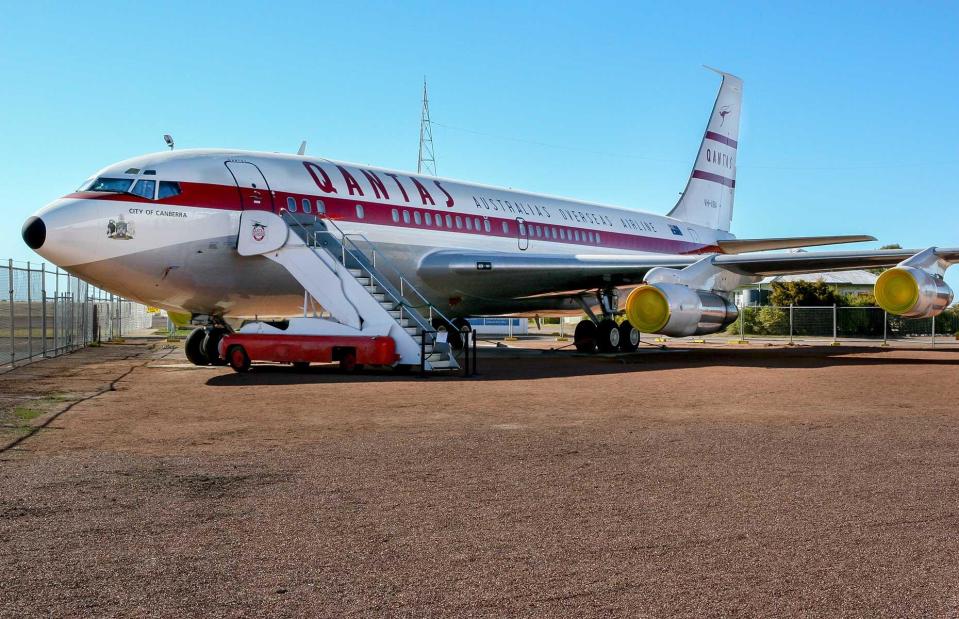
Edward Haylan/Shutterstock
Having landed in Kushiro, on Japan's east coast, Michael knew the most problematic portions of the journey were behind him. “I needed a few days' rest and while the weather continued to be difficult on the way home, I made it through Japan in a week, then on to the Philippines over a few days, then a pit stop in Ambon before making it back to Australia,” says Michael. Touching down in Longreach (pictured) in Queensland’s outback was a milestone – not only was it the birthplace of the airline Qantas, it marked the completion of Michael’s somewhat inadvertent trip around the world.
The end of the adventure
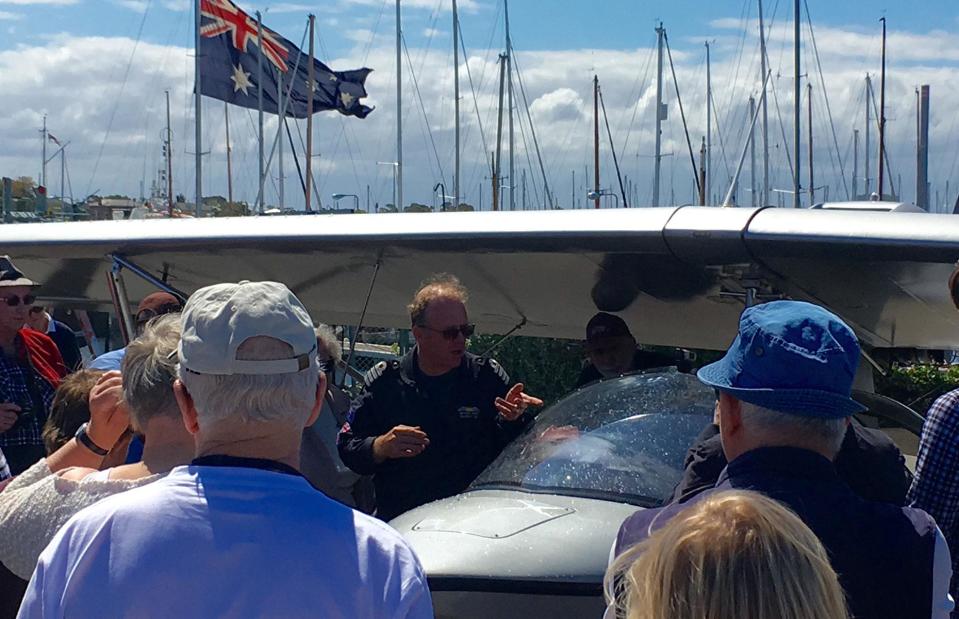
Courtesy of Michael Smith
It was a further two days before Michael arrived home in Melbourne on Saturday 14 November 2015. "I was feeling very pleased to be reunited with my family, and chuffed to have been aboard Southern Sun as she became the first amphibian aircraft to complete a solo circumnavigation," says Michael. "She did really well."
Journey of a lifetime
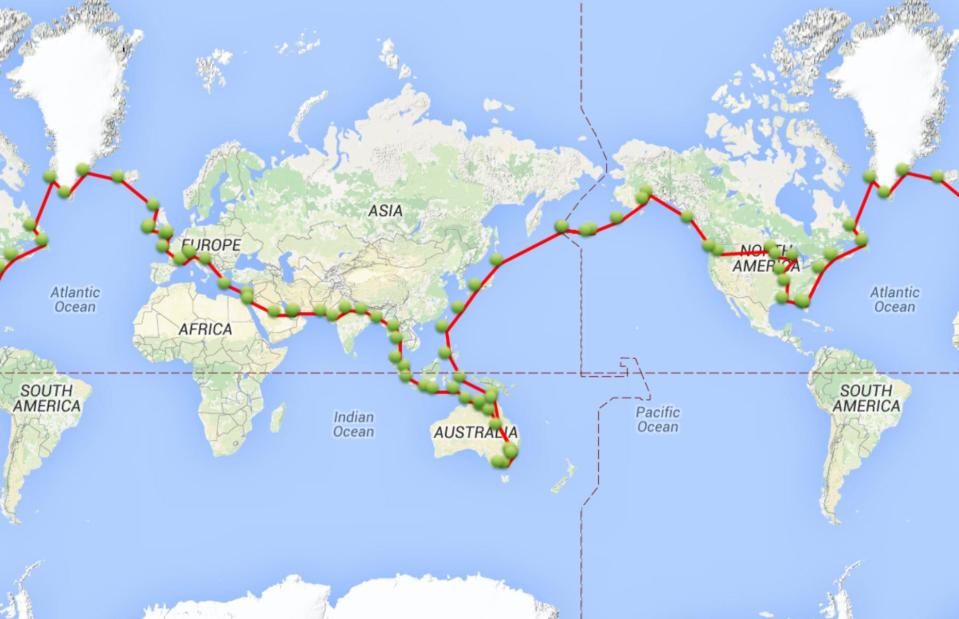
Courtesy Michael Smith
Viewed on a map this 32,500-mile (52,000km) journey is nothing short of incredible: 210 days, 25 countries, 80 stops and 480 hours in the sky all played their part in Michael’s circumnavigation. And while he says “I doubt I’ll top this journey,” Michael is optimistic he’ll be taking to the skies again for more epic adventures. Southern Sun certainly won't be hanging up her wings just yet.
Now see the groundbreaking planes that changed the way we travel


